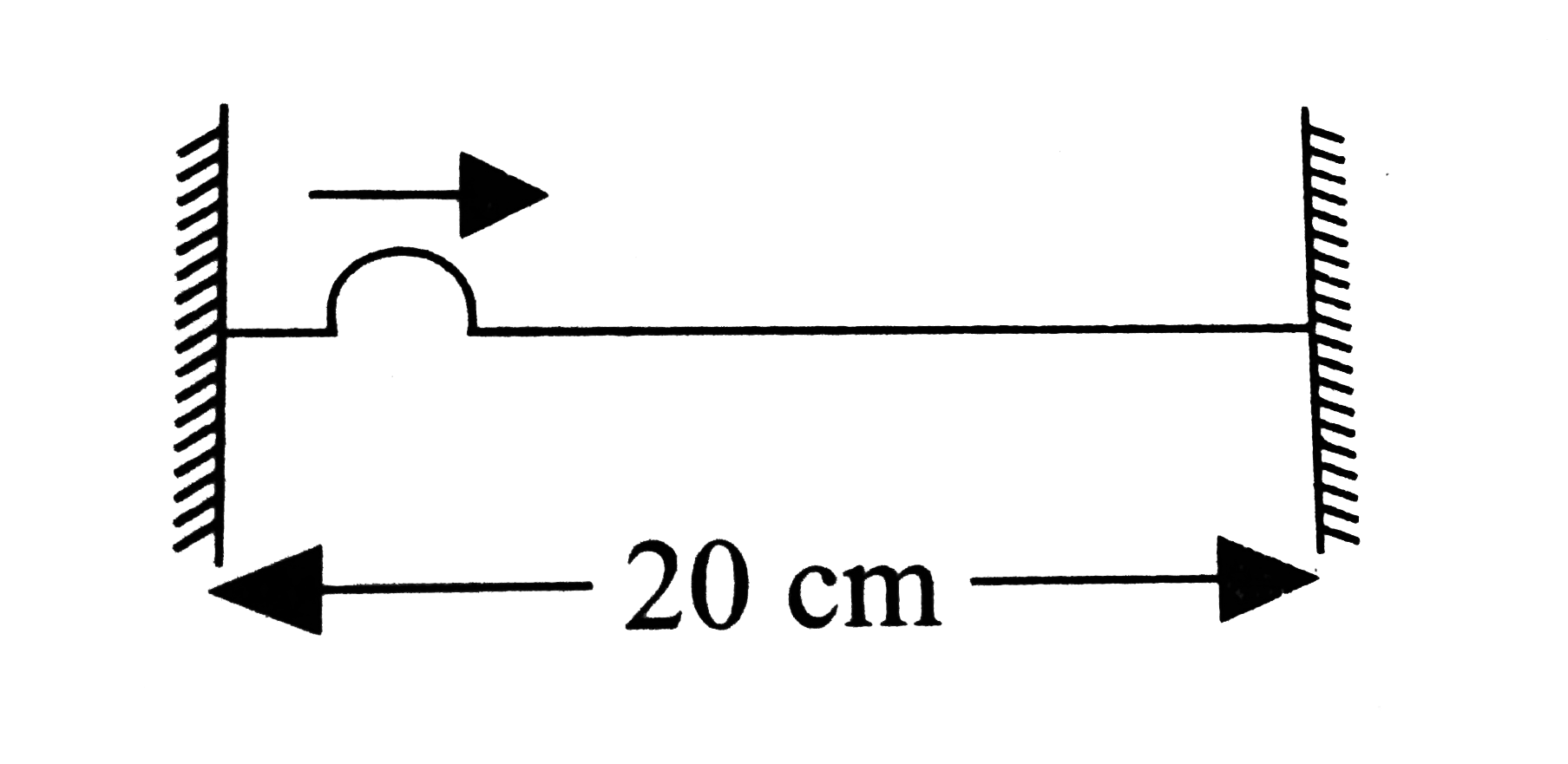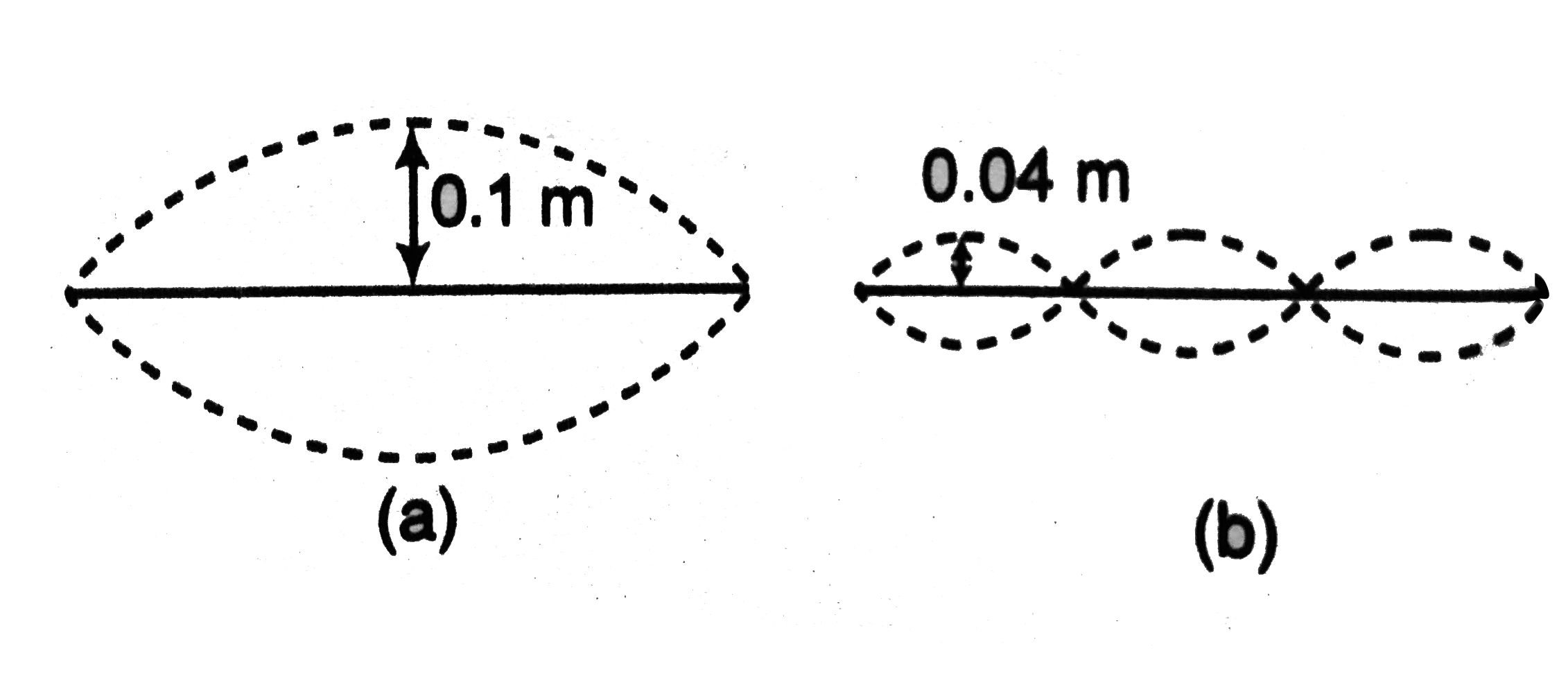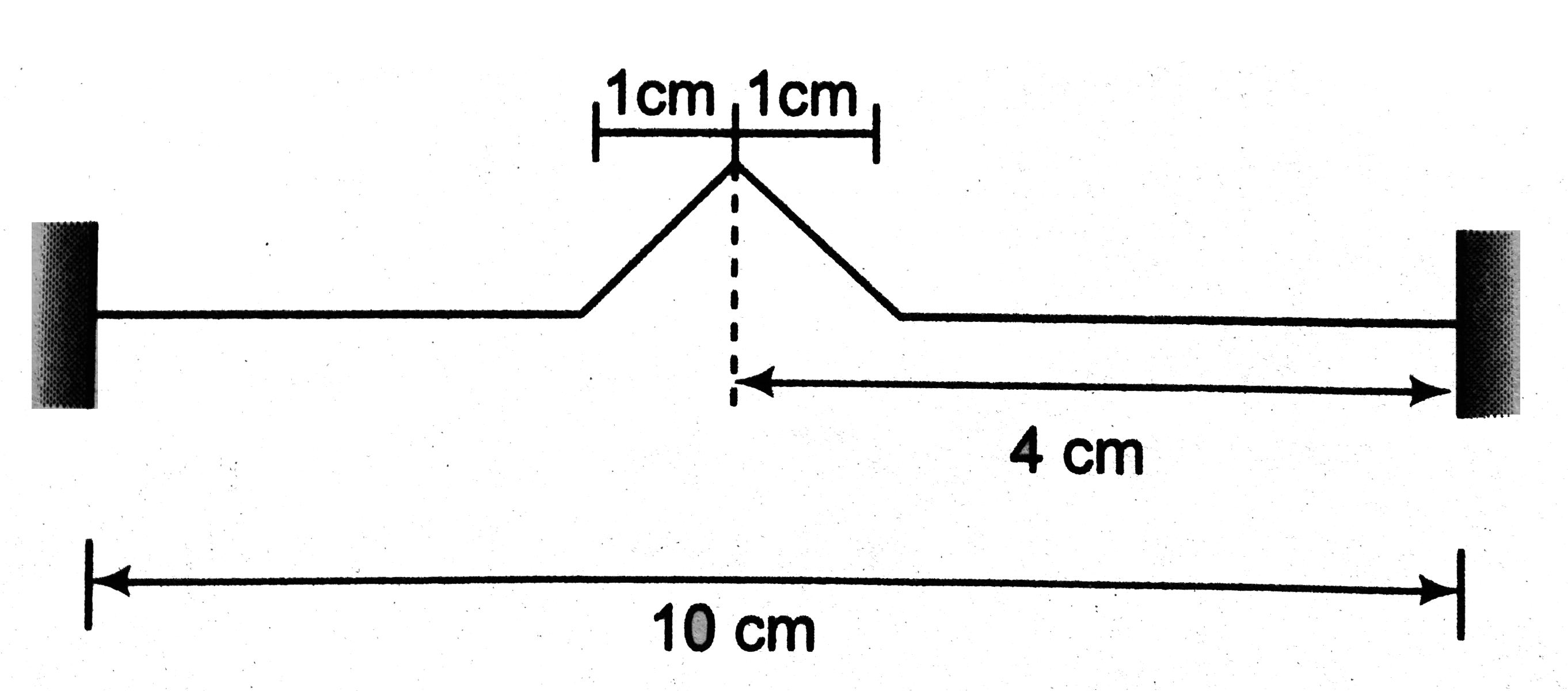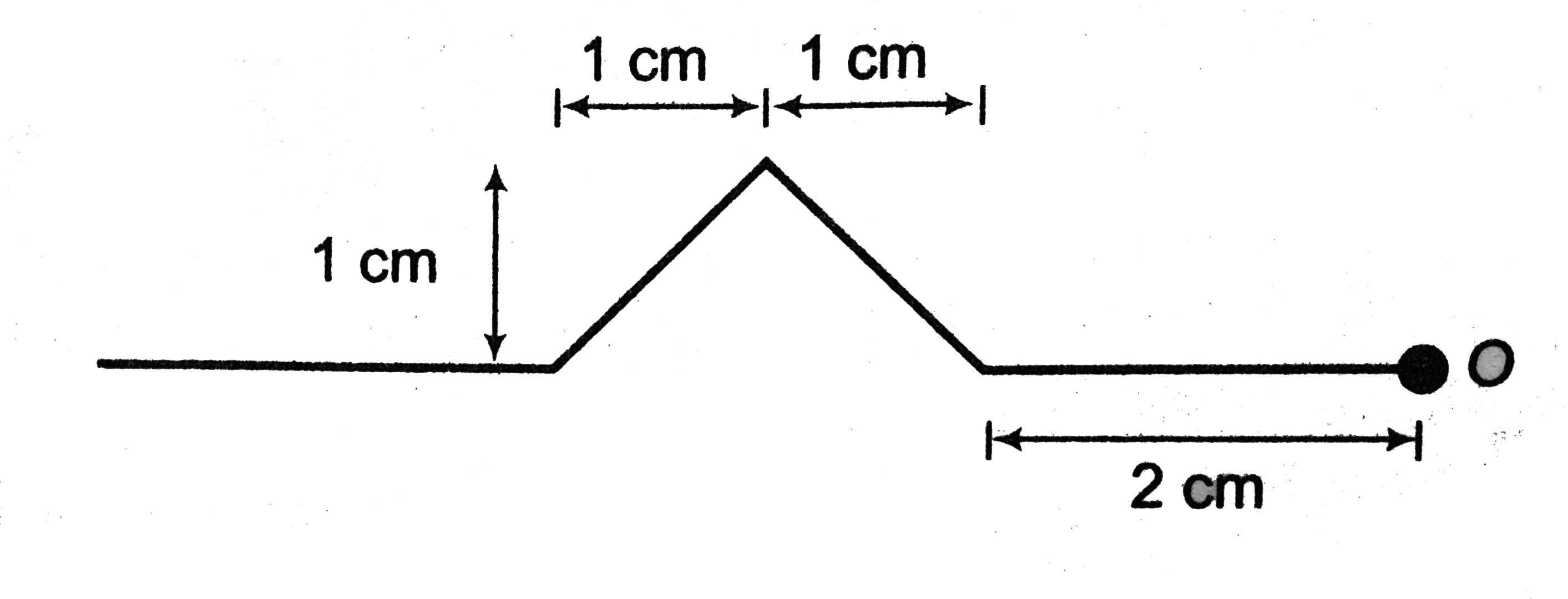Level 1 Subjective from DC PANDEY ENGLISH Chapter 34 SUPERPOSITION OF WAVES for Class 11
| Class 11 | PHYSICS |
| Chapter | SUPERPOSITION OF WAVES |
| DC PANDEY ENGLISH | Level 1 Subjective |
| Medium | English |
| Academic Year | 2023-2024 |
Question 2
Two wires of different densities are soldered together end to end then stretched under tension T. The waves speed in the first wire is twice that in the second wire.
(a) If the amplitude of incident wave is A, what are amplitudes of reflected and transmitted waves?
(b) Assuming no energy loss in the wire, find the fraction of the incident power that is reflected at the junction and fraction of the same that is transmitted. View SolutionQuestion 5
A string of length 20cm and linear mass density 0.40g/cm is fixed at both ends and is kept under a tension of 16N.A wave pulse is produced at t=0 nearj an end as shown in figure which travels towards the other end.
when will the string have the shape shown in the figure again? (∈×10−2s)
 View Solution
View SolutionQuestion 7
Two sinusoidal waves combining in a medium are described by the equations
y1=(3.0cm)sinπ(x+0.60t)
and y2=(3.0cm)sinπ(x−0.06t)
where, x is in centimetres and t is in seconds. Determine the maximum displacement of the medium at
(a)x=0.250 cm,
(b)x=0.500 cm and
(c) x=1.50 cm.
(d) Find the three smallest values of x corresponding to antinodes. View SolutionQuestion 8
A standing wave is formed by the interference of two travelling waves, each of which has an amplitude A=πcm , angular wave number k=(π/2) per centimetre.
(a) Calculate the distance between two successive antinodes.
(b) What is the amplitude of the standing wave at x=0.50cm from a node? View SolutionQuestion 17
Adjacent antinodes of a standing wave on a string are 15.0 cm apart. A particle at an antinode oscillates in simple harmonic motion with amplitude 0.850 cm and period 0.0750 s. The string lies along the +x-axis and is fixed at x=0.
(a) find the displacement of a point on the string as a function of position and time.
(b) Find the speed of propagation of a transverse wave in the string.
(c) Find the amplitude at a point 3.0 cm to the right of an antinode. View SolutionQuestion 19
A wire with mass 40.0 g is stretched so that its ends are tied down at points 80.0 cm apart.The wire vibrates in its fundamental mode with frequency 60.0 Hz and with an amplitude at the antinodes of 0.300 cm.
(a) What is the speed of propagation of transverse wave in the wire?
Compute the tension in the wire.
(c) Find the maximum transverse velocity and acceleration of particles in the wire. View SolutionQuestion 21
Figure shows different standing wave patterns on a string of linear mass density 4.0×10−2kg/m under a tension of 100 N. The amplitude of antinodes is indicated in each figure. The length of the string is 2.0m.
(i) Obtain the frequencies of the modes shown in figures (a) and (b).
(ii)Write down the transverse displacement y as a function of x and t for each mode. (Take the initial configuration of the wire in each mode to be as shown by the dark lines in the figure).
 View Solution
View SolutionQuestion 22
A string fastened at both ends has successive resonances with wavelengths of 0.54 m for nth harmonic and 0.48 m for the (n+1) th harmonic and 0.48 m for the (n+1) th harmonic.
(a) Which harmonics are these?
(b) What is the length of the stirng?
(c) What is the wavelength of the fundamental frequency? View SolutionQuestion 24
A string that is 10 cm long is fixed at both ends. At t=0, a pulse travelling from left to right at 1cm/sis4.0cm from the right end as shown in figure. Determine the next two times when the pulse will be at that point again. State in each case whether the pulse is upright or inverted .
 .View Solution
.View Solution
All Exercises from DC PANDEY ENGLISH Class 11 PHYSICS SUPERPOSITION OF WAVES
- Example
- Example Type 1
- Example Type 2
- Example Type 3
- Example Type 4
- Exercise 18.1
- Exercise 18.2
- Exercise 18.3
- Exercise 18.4
- Level 1 Assertion And Reason
- Level 1 Objective
- Level 1 Subjective
- Level 2 Comprehension Based
- Level 2 More Than One Correct
- Level 2 Single Correct
- Level 2 Subjective
- Miscellaneous Example
- More than One correct Options
- Objective Questions
- Subjective Questions
